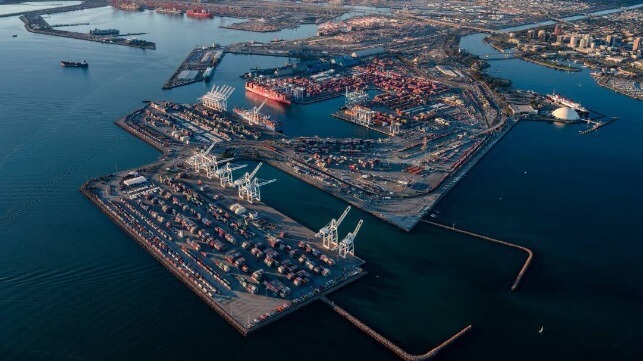Long Beach Seeks Offshore Wind Opportunities with Pier Wind Project

The Port of Long Beach is looking to offshore wind turbine assembly and manufacturing as a new growth strategy as part of its vision for the future. The port announces its plans for a terminal dedicated to California’s emerging offshore wind business as port executives review the state of the port and declared 2023 as the “Year of Imagination” as they look toward the future now that the surge in containers has peaked.
A centerpiece in the port’s future strategy and its overall goal to become the world’s first zero-emissions seaport, the new 400-acre terminal would be the largest offshore wind turbine assembly facility dedicated to floating wind farm technology. The proposed floating offshore wind staging and integration facility is dubbed “Pier Wind” within the port’s complex.
The port aims to capitalize on the new offshore wind projects designed for the Pacific coast after the first California wind lease auction conducted by the Bureau of Ocean Energy Management in December last year that generated $750 million. Five companies presented bids for the five lease areas totaling more than 370,000 acres off the coast of Northern and Central California. The projects would have a combined installed capacity of 4.6 GW and because of the ocean topography, it is expected that they would largely be based on floating wind turbines.
“I am proud to be part of an industry and a port that together offer innovative approaches and forward-thinking initiatives that continue to be the most imaginative solutions in the nation,” said Mario Cordero, Port of Long Beach Executive Director during the State of the Port on January 26.
The conceptual assessment for the new facility is scheduled for completion in April 2023. The assembled turbines would be deployed to wind farms off the coast of Central and Northern California and will help the state meet its goal of producing 25 GW of offshore wind power by 2045, in addition to creating jobs and economic opportunities for communities near the San Pedro Bay port complex.
Venturing into wind turbine assembly and manufacturing is a critical component of the port’s future business strategy. The Port of Long Beach ended 2022 on a strong footing despite being overtaken by the Port of New York and New Jersey as the U.S.’s second busiest seaport. During the year, Long Beach moved just over 9.1 million TEU, which while down 2.7 percent from 2021 was still the port’s second busiest year. With more than 1.4 million TEUs of loaded exports moved, the port remained the nation’s leading export port for a second consecutive year, but with the decline that began in the second half of 2022 continuing into 2023, the port is looking to new strategies for the future.
During the presentation, Cordero said that the seaport intends to accelerate green initiatives, which have already been running for nearly two decades. They are establishing a Zero Emissions, Energy Resilient Operations Program known as ZEERO. Through the program, Long Beach plans to invest in projects aimed at reducing the impacts of operations and improving air quality.
During the year, Long Beach completed key projects including the Pier G-J Double Track project providing a crucial extra track for rail arrivals and departures in the south basin area. Construction also started on the Fourth Track at Ocean Boulevard project, adding another vital rail line. Another significant milestone was the planned channel deepening, a project that will allow some of the largest vessels to more easily transit the port’s waters thus improving efficiency and the environment.
To ensure that it maintains its competitive position, the Port of Long Beach plans to invest in rail infrastructures that will improve efficiency and reduce truck trips while also lessening environmental impacts amid increases in cargo over the next decade. Part of these projects includes the commencement of construction on the port’s rail program centerpiece, the Pier B On-Dock Rail Support Facility next year. The facility will allow longer trains to be created more frequently.
